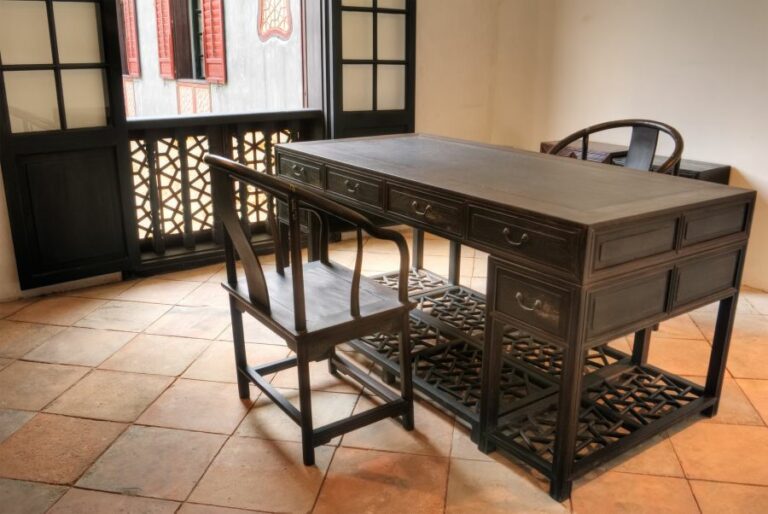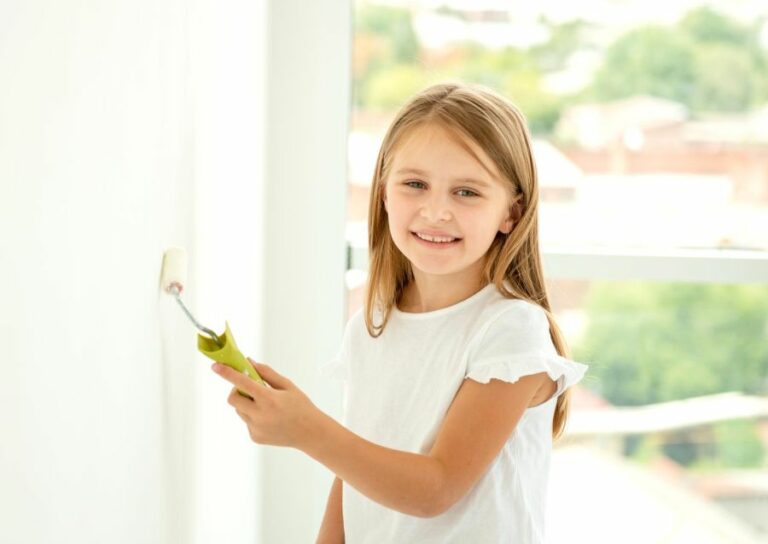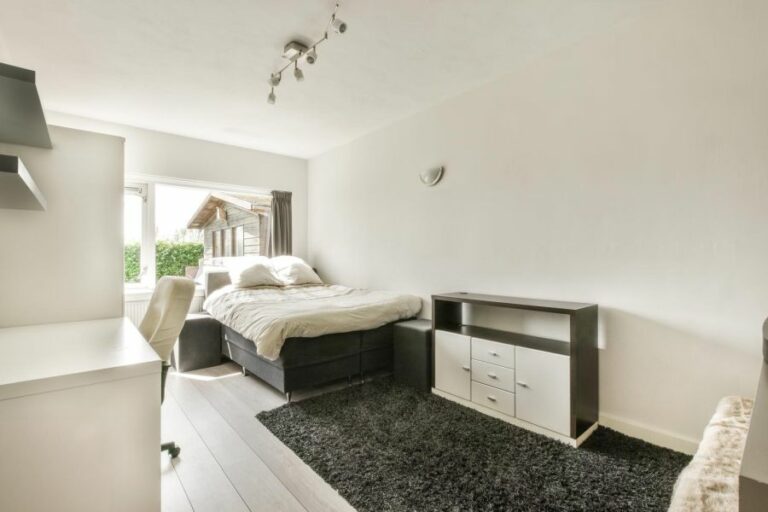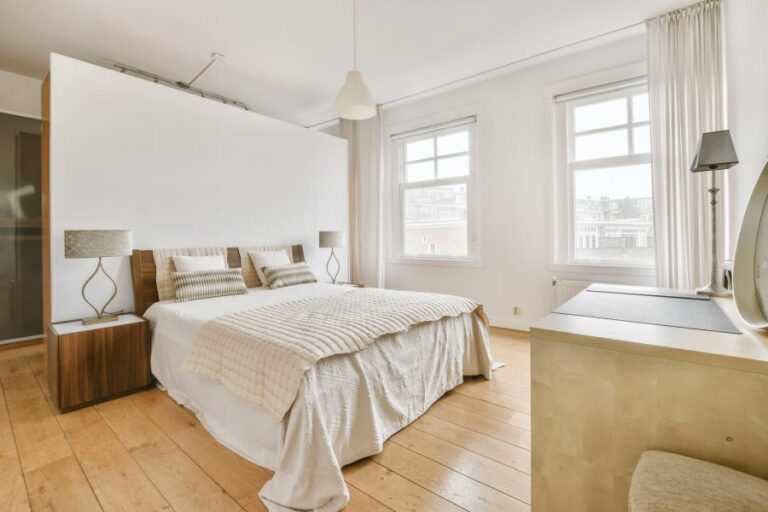Painting Tips For Compact Living Spaces. What Pros Say
Are you facing the challenge of making your compact living space feel more spacious and inviting? Worry not, as we’ve got some tried-and-true painting tips to help you transform your small rooms into comfortable and stylish retreats. Stick with us, and we’ll guide you through your paint selection journey, ensuring your tiny abode becomes the stylish and cozy sanctuary it deserves to be.
Painting tips for compact living spaces:
To paint compact living spaces, select light colors with a high Light Reflectance Value (LRV), opt for a matte finish, and incorporate vertical and horizontal lines in the design. Use high-quality painting tools and ensure proper wall preparation. Consider breaking conventional rules for a unique look and utilize appropriate lighting to enhance the perception of space.

Maximize your compact living space with creative painting techniques and color choices that transform and enhance every inch. Uncover the secrets of design pros in our helpful guide. Read on and discover how to make small spaces feel big and vibrant.
Contents
- 1 Expert Advice for Painting Small Living Areas
- 2 Techniques for Painting in Tight Quarters
- 3 Expanding the Visual Space of Your Small Living Room with Paint
- 4 Optimal Paint Color to Enhance Small Room Sizes
- 5 Selecting the Best Paint Color for a Cozy Apartment
Expert Advice for Painting Small Living Areas
• Choose the Right Colors
One of the most crucial decisions you’ll make when painting a small living space is color selection. Light colors typically make a room feel more spacious, while darker shades can make it feel more confined.
However, don’t be afraid to experiment with bolder colors, as they can provide a unique, eye-catching look. Some popular choices for small rooms include light shades of blue, green, or gray.
If possible, avoid using too many contrasting colors, as this might create the illusion of a more cluttered environment. Instead, use complementary tones to establish harmony and balance.
• Light Reflectance Value
When selecting paint colors, consider the Light Reflectance Value (LRV) of each shade. LRV is a measurement that indicates how much light a color can reflect or absorb. A higher LRV means that the color reflects more light, making the room appear larger and more open.
Most paint manufacturers provide the LRV rating on the paint swatch, so you can easily compare different colors. You can learn more about Light Reflectance Value here.
• Opt for a Matte Finish
The finish of your paint can also impact the perceived size of a compact living space. Glossy finishes tend to accentuate surface imperfections and can create glare, which draws attention to the walls and highlights their boundaries.
On the other hand, matte finishes have a more subtle and uniform appearance, potentially making the room feel more spacious. Matte finishes are also easier to touch up, which is great if you’ll be living in a small space where wear and tear are more noticeable.
• Use Vertical and Horizontal Lines
Incorporating vertical and horizontal lines into your design can create an interesting visual effect and make a room feel larger. Vertical lines can be accomplished by using stripes, paneling, or tall bookshelves to draw the eye upward, giving the illusion of higher ceilings.
Horizontal lines, such as wainscoting, dado rails, or horizontal shelving, can make the room feel wider. When employing these techniques, remember to choose colors that are complementary to your overall design and avoid excessively bold or high-contrast patterns.
• Break the Rules
While it’s generally suggested to stick with lighter colors and matte finishes in small spaces, sometimes breaking the rules can lead to delightful and unexpected results.
For instance, if you have confidence in your artistic abilities or a strong vision for your space, don’t be afraid to use a standout color on an accent wall or embrace a visually bold pattern.
There is no one-size-fits-all approach to interior design, and what works best for your compact living space may not be what’s generally recommended.
• Preparation is Key
Before you begin painting your small living space, make sure to properly prepare the area. This includes removing any furniture or other items that could be damaged during the painting process, as well as using painter’s tape to protect baseboards, trim, and electrical outlets.
Additionally, it’s essential to properly clean and prepare the walls themselves, as any cracks, holes, or uneven surfaces could stand out more in a small room.
Fill any holes or cracks with the appropriate filler, sand the surface to create an even texture, and then use a high-quality primer to ensure optimal paint adhesion.
• Use the Right Tools
Investing in high-quality painting tools is essential when working in compact spaces, as they can drastically impact the overall result. A smooth, even paint job can make a room feel significantly larger and more cohesive than one with visible brushstrokes or uneven roller marks.
Look for quality brushes, rollers, and paint trays to ensure a professional finish, and always use the correct tools for each specific task.
• Proper Lighting
Lastly, please don’t underestimate the power of lighting in a small living space, as it can greatly influence the perception of size and openness. Ideally, you want to maximize the use of natural light, but if that’s not an option, invest in well-placed artificial lighting.
Choose light fixtures that complement the room’s color scheme, and consider using dimmers to adjust the ambiance as needed.
By carefully considering your color options, using the right techniques, and paying close attention to the details, you can transform your compact living space into a beautiful and inviting environment. With thoughtful planning and proper execution, even the smallest spaces can feel larger and more welcoming.
Techniques for Painting in Tight Quarters
Painting between tight spaces can be a daunting task, especially for inexperienced painters.
• The Essential Tools
1. The Brush
Choose a quality brush that is suitable for the job. Generally, it’s best to use a tapered or angled brush head which allows for more precise control when painting in tight spaces. Here’s a link to a guide by the National Park Service explaining proper paint selection for various situations.
2. Paint Can Lid Opener / Stir Stick
A paint can opener and stir stick are mandatory when working with paint. Properly opening the can and thoroughly mixing the paint before use ensures consistent colors and coverage.
3. Painter’s Tape
Using quality painter’s tape is crucial for precise lines and preventing unwanted paint from bleeding onto adjacent surfaces.
4. Drop Cloth
A drop cloth is essential to protect your floors and furniture from paint splatter.
5. Extension Pole
An extension pole is useful for reaching higher or difficult-to-reach areas without the need for a ladder.
• Preparation Techniques
Once you have gathered your essential tools, follow these preparation techniques before starting the painting process.
1. Clean the surfaces
Dirt, dust, and grime can hinder paint adhesion and ultimately affect the final result. Using a damp cloth or sponge, gently clean the surfaces to be painted and let them dry thoroughly.
2. Apply Painter’s Tape
For straight, clean lines, apply painter’s tape to adjacent surfaces. Press down firmly on the tape to ensure full adhesion and avoid paint seeping underneath.
3. Prepare your paint
Open your paint can with the opener and stir the paint thoroughly using a wooden stir stick. Mixing the paint helps distribute the color pigments evenly and ensures a consistent finish.
4. Protect the surrounding area
Place a drop cloth on the floor or over any furniture near the tight spaces to prevent paint spills and splatters.
• Painting Process: Steps to Achieve Professional Results
Now that everything is prepared, let’s dive into the actual painting process.
1. Dip the brush
Dip your brush roughly halfway into the paint and remove any excess paint by pressing the bristles against the edge of the paint can. Overloading your brush with paint could lead to drips and an uneven finish.
2. Paint with long strokes
With your loaded brush, use long, controlled strokes to paint between the tight spaces. Begin your stroke slightly outside the target area and extend the stroke beyond it, using the tapered or angled brush to reach difficult areas.
3. Maintain a consistent direction
When painting between tight spaces, it’s essential to maintain a consistent direction. Alternating the brush direction can create a noticeable difference in the finish.
4. Check for drips, runs, or overlaps
As you paint, keep an eye out for drips, runs, or overlaps in the paint. If you see any, quickly brush over them to create a smooth and even finish.
5. Use the extension pole when necessary
If the area you’re painting is difficult to reach, attach the brush to an extension pole. This will allow you to maintain proper control without resorting to a ladder.
6. Remove painter’s tape
After you’ve completed painting between the tight spaces, carefully remove the painter’s tape before the paint dries. Peeling it off after the paint has dried can cause the paint to chip or peel.
7. Inspect your work & touch up if needed
Once the paint has dried, inspect your work for any unevenness or missed spots. If necessary, apply a second coat or touch up any areas with a small brush.
• Final Thoughts
Painting between tight spaces doesn’t have to be challenging. By using the appropriate tools, following these expert preparation techniques, and executing the painting process carefully, you’ll achieve a professional-looking result for any project.
Remember the importance of using a quality brush, protecting your surroundings, maintaining proper brush technique, and inspecting your work for a flawless finish. Good luck, and happy painting!
Step | Description |
|---|---|
1 | Clear the area: Remove any furniture, decorations, or obstructions from the space you want to paint. |
2 | Clean the surface: Ensure the surface you are painting is clean and free of dirt, dust, or debris. |
3 | Choose the right tools: Use a paintbrush or a small roller with a long handle to reach tight spaces. |
4 | Apply primer: Apply a coat of primer to the surface to help the paint adhere better and last longer. |
5 | Paint the edges: Use an angled paintbrush to paint the edges and corners of the tight space. |
6 | Paint the surface: Apply paint to the surface with a small roller or brush, working in small sections. |
7 | Let it dry: Allow the paint to dry completely before applying any additional coats or reassembling the space. |
Expanding the Visual Space of Your Small Living Room with Paint
A small living room can feel cramped and claustrophobic, but with the right paint colors and techniques, you can create the illusion of a much larger space.
• Choosing the Right Colors
When it comes to creating the illusion of a larger space, color selection is crucial. Light colors are known to make spaces feel larger and more open, while dark colors tend to make a room feel smaller and more intimate.
– Recommendations for Light Colors
- White: White is the classic choice for making a room feel bigger and brighter. It reflects natural light and creates a clean, open feel. You can choose between warm whites, cool whites, or off-white shades, depending on your preference.
- Soft neutrals: Light beige, greige, or gray tones can create a warm and inviting atmosphere while still making the room feel larger. These shades work well with various decorating styles and furniture colors.
- Cool colors: Light shades of blue or green can make a room feel more spacious and airy. Opt for soft pastel tones, like sky blue or mint green, to create a calming and serene atmosphere.
• Using Visual Tricks with Paint Techniques
Once you’ve chosen your paint color, there are several techniques to enhance the feeling of spaciousness in your small living room.
– Horizontal or Vertical Stripes
Painting horizontal or vertical stripes on your walls can create the illusion of a wider or taller room, respectively. Keep the stripes thin and subtle for a more elegant look, or go bolder with wider stripes for a more dramatic effect.
– Accent Wall
Creating an accent wall with a slightly darker shade of your chosen paint color can add depth and dimension to the room. This technique draws the eye towards the focal point, making the rest of the room feel more spacious.
– Two-Tone Walls
Dividing the wall into two sections with different paint colors can also create the illusion of a larger room. Try painting the lower half of the wall in a darker shade and the upper half in a lighter one. This technique helps to visually lift the ceiling, making the room feel taller.
• Maximizing Natural Light
Taking advantage of natural light is essential for making a small living room feel larger. By painting your walls and ceiling in lighter colors that reflect light, you can make the most out of the available sunlight.
– Mirrors
Adding mirrors to your living room can amplify the effect of natural light and create the illusion of a more open space. Position mirrors on opposite windows or on adjacent walls to reflect natural light and add depth to the room.
– Window Treatments
Choosing the right window treatments can significantly impact your living room’s sense of space. Opt for sheer or light-colored curtains that let in plenty of light without blocking the view. Avoid heavy drapes or dark colors, as they can make the room feel smaller and more closed-off.
• Other Tips for Creating the Illusion of Space
In addition to paint colors and techniques, there are a few other design elements to consider when trying to make your small living room feel larger.
– Furniture Arrangement
Keep your furniture minimal and focus on pieces with clean lines and a smaller footprint. Float furniture away from the walls to create a sense of openness and avoid obstructing sightlines with oversized items.
– Artwork
An oversized piece of art or a large mirror can add visual interest and make the room feel bigger. Avoid hanging multiple small pieces of art, as this can make the walls feel cluttered and closed in.
– Lighting
Layered lighting with a mix of floor lamps, table lamps, and evenly spaced recessed lighting can brighten up the room and make it feel larger. Opt for bulbs with a soft, warm glow to further enhance the sense of space.
The National Association of Home Builders recommends looking at resources like the National Association of Home Builders, which offers a wealth of information on maximizing small spaces through clever design and layout choices.
In conclusion, creating the illusion of a larger living room is all about using light, color, and visual tricks to your advantage.
By carefully choosing your paint colors, incorporating smart paint techniques, maximizing natural light, and making thoughtful design choices, you can transform your small living room into a more open, inviting space that feels much larger than its actual square footage.
Step | Description |
|---|---|
1 | Choose light and neutral colors for the walls, such as white, beige, or light gray. These colors reflect more light and create a sense of spaciousness. |
2 | Paint the ceiling a lighter color than the walls. This will create the illusion of a higher ceiling and expand the perceived space. |
3 | Use a satin or semi-gloss finish for the paint. This type of finish reflects more light, making the room look larger and brighter. |
4 | Paint vertical stripes on one or more walls. This will visually elongate the walls and make the room appear taller. |
5 | Add mirrors or mirrored furniture to the room. These will reflect light and create the illusion of a larger space. |
6 | Declutter the room and remove bulky furniture to maximize open space. This will also help to make the room appear larger. |
Optimal Paint Color to Enhance Small Room Sizes
A small room can sometimes feel cramped, but with the proper use of colors, you can make it look bigger and more spacious.
• Best Colors to Make a Small Room Look Bigger
It is a well-known fact that lighter colors make a room look more spacious, while darker colors tend to do the opposite. Let’s explore specific color options that can create the illusion of a larger room.
1. White
White is the classic color choice for making any space appear larger, as it reflects light and gives the room a clean, airy feel. Opt for either an all-white color scheme or use white as the dominant color, paired with other light hues.
2. Light Grays
Light grays are an excellent alternative if an all-white room is not your cup of tea. These neutral colors make a space appear open and inviting. Pair them with crisp white accents for an optimal effect.
3. Soft Pastels
Soft pastels, such as pale blues, greens, pinks, and yellows, give a room airy and light quality. Use these colors as the primary wall color and combine them with white or light gray accents.
4. Cool Colors
Cool colors like greens, blues, and purples with close-to-white tints can make a room feel larger as they create the impression of receding walls. Opt for softer shades of these colors that reflect light rather than bold or dark tones.
• How to Use Color to Create the Illusion of a Bigger Room
Besides choosing the right colors, there are additional ways to paint and decorate your small room to make it look bigger.
– Break the Monotony with Patterns
While solid colors are generally preferred for small spaces, incorporating patterns can help break the monotony and make a room feel less cramped. Vertical stripes, for example, can give the illusion of height, while horizontal stripes can make a narrow room appear wider.
When using patterns, ensure that they are in subtle or light colors to avoid overwhelming the space.
– Blend Wall and Trim Colors
Using the same color for your walls and trim creates a seamless appearance that visually expands the space. Alternatively, you can choose a trim color that is only slightly lighter or darker than the wall color, which still maintains that continuous, unified look.
– Create Focal Points
To draw the eye and make your room feel larger, add pops of color or interesting design features to a specific area. For instance, paint a single wall in a bold color, or create an accent wall with patterned wallpaper.
– Use a Monochromatic Color Scheme
A monochromatic color scheme comprises different shades of the same color. This creates a sense of visual continuity, making the room appear larger. For example, if your chosen color is pale blue, use various shades of pale blue for walls, trim, furniture, and accessories.
• Additional Design Tips for Small Spaces
Apart from color, there are other design elements that can make a small room appear bigger.
– Use Mirrors and Reflective Surfaces
Mirrors have long been used to create an illusion of space in a room. Place a large mirror opposite a window or light source to amplify natural light and make the room appear brighter and more expansive.
Similarly, reflective surfaces, such as high-gloss paint or metallic finishes on furniture, can add to this effect.
– Opt for Multifunctional and Space-Saving Furniture
Utilize furniture pieces that are multipurpose or can be easily stored away when not in use. This minimizes clutter and contributes to a sense of spaciousness.
– Emphasize Vertical Space
Draw attention upwards by using tall furniture, hanging shelves, or floor-to-ceiling drapes, among other tricks. This emphasizes the vertical space, making the room feel bigger.
– Let in Natural Light
Ample natural light is key to making any space appear larger. Keep your window treatments minimal and opt for light, sheer curtains to allow sunlight to flood the room.
In conclusion, using the right colors and incorporating some clever design tricks can make a small room appear larger and more spacious.
These recommendations, paired with the Color, Space, and Style guide by Arizona State University, will help you transform a cramped space into an inviting, open area. Happy designing!
Selecting the Best Paint Color for a Cozy Apartment
Are you planning to give your small apartment a fresh coat of paint? Picking the right paint color can make a huge difference in how small spaces look and feel.
• The Psychology of Colors
The color you choose for your apartment will not only change its aesthetics but can also impact your mood and emotions. Various studies suggest that colors have a psychological effect on human behavior.
For example, blue is known for its calming effect, while red may energize you. Click here for an extensive study on color psychology.
– Warm and Cool Colors
Understanding the difference between warm and cool colors is essential when trying to make your apartment feel more spacious. Warm colors, such as red, orange, and yellow, make spaces feel cozier and more intimate, while cool colors, such as blue, green, and purple, can create the illusion of space.
• Light Reflectance Value (LRV)
When choosing paint colors, consider their Light Reflectance Value (LRV). LRV is a measurement of how much light a color reflects or absorbs.
Higher LRVs indicate lighter colors that reflect more light, making a room look bigger and brighter. On the other hand, darker colors with lower LRVs make spaces feel smaller.
You can typically find LRV values on paint swatches or consult with a professional at your local paint store. As a general rule of thumb, aim for paint colors with an LRV of at least 50, as these will reflect more light and create the feeling of a larger space.
• Neutrals are Your Best Friend
In small apartments, neutral colors are an excellent choice for creating a spacious, bright, and calm atmosphere. Neutrals, such as white, beige, and grey, are versatile and can be combined with various accents to add depth and interest.
– White
White is the classic choice for small spaces, as it reflects the lightest and creates a clean, crisp look. However, be careful when choosing the right shade of white, as some may have undertones, like yellow or blue, which can alter the space’s mood.
– Grey and Beige
If you find white too stark, opt for a light grey or beige instead. Grey is an elegant choice that can add sophistication to your small apartment, while beige adds warmth and coziness without making the room feel too tight.
• Accent Colors
To keep your small apartment from looking too bland or monotonous, incorporate accent colors, but pick them wisely. A pop of color can create visual interest and draw attention to specific areas in your space. Here are some tips to help you choose the perfect accent colors:
– Complementary Colors
Pick an accent color that complements your primary color scheme. You can find complementary colors by referring to a color wheel or color palette generators available online, such as Adobe Color CC.
– Go Bold, But Don’t Overdo It
Depending on your taste, you may opt for vibrant and bold hues, such as bright yellow or teal. However, in small apartments, it’s essential not to overdo it. You can incorporate your favorite bold colors by using them in smaller doses, like on an accent wall, accessories, or furniture.
• Test and Observe
Before committing to a color, test it by painting a small swatch on your walls. Observe it at different times of the day and under various lighting conditions, as colors might appear differently depending on the amount of natural and artificial light in your apartment.
• To Summarize
When choosing paint colors for your small apartment, remember the following:
- Be aware of the psychological impact of colors.
- Opt for cool and neutral shades with high LRVs to make your apartment feel more spacious and brighter.
- Use accent colors wisely, and don’t be afraid to go bold, but in moderation.
- Always test the color on your walls before committing.
By following these guidelines, you can make your small apartment look and feel more spacious while also creating a pleasant atmosphere that suits your personal style. Happy painting!
Step | Description |
|---|---|
1 | Assess the apartment’s natural light and layout. |
2 | Choose a color scheme that complements the furniture and decor in the space. |
3 | Use lighter shades to make the space appear larger and more open. |
4 | Consider using a single color for the walls and ceiling for better visual flow and to create the illusion of a larger room. |
5 | Add accents of bolder colors through decorative elements such as art, pillows, rugs, and furniture. |
6 | Use tester pots and paint swatches to visualize how the paint color will look in the room. |
7 | Consider the function and mood desired for each room when choosing paint colors, as this can impact how you feel in the space. |
8 | Test the paint color in different lighting conditions both natural and artificial, to ensure it looks good throughout the day and evening. |







